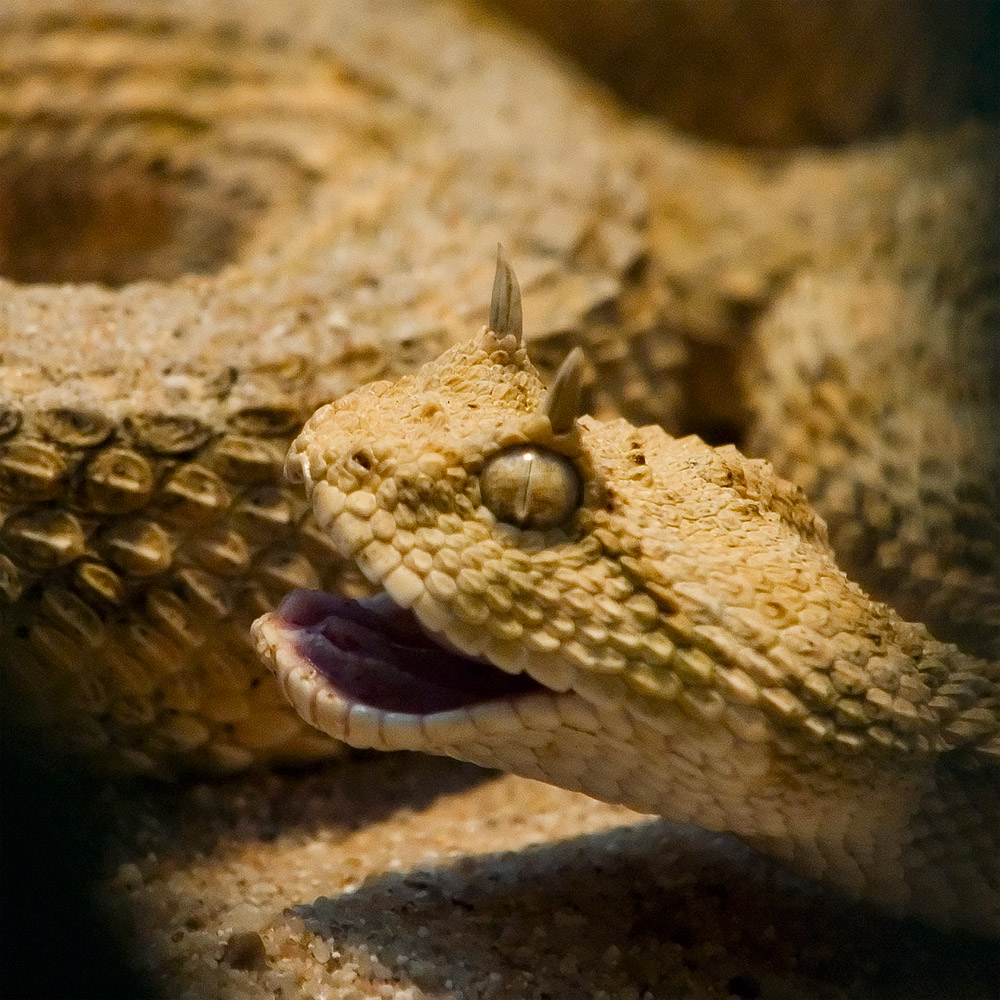
horned desert viper a photo on Flickriver
30-60 cm inch The Saharan horned viper ( Cerastes cerastes) is a venomous species of viper native to northern Africa and parts of the Arabian Peninsula and Levant. It often is easily recognized by the presence of a pair of supraocular "horns", although hornless individuals do occur. No Nocturnal Ca Carnivore Te Terrestrial
I photographed this amazing horned desert viper 🐍 [OC] (see 1st comment for more info) r/reptiles
Desert horned vipers have a very distinctive appearance, and are easily identified by the protruding scales above their eyes. These scales mimic the appearance of sharp horns, and give the desert horned viper its name. Desert horned vipers are heavy-bodied snakes and can reach lengths of around 2 feet. They are typically sand-colored -- tan.

Desert Horned Viper •
Physical description: The Desert Horned Viper is 4-5ft. long. Its head is broad and triangular with two horns that stick out above each eye. Its pupils are vertical. Scales are keeled. Color is tan with darker spots down the back, and a dark line extends from the eye to the temples. General information: The Desert Horned Viper lives in the desert.
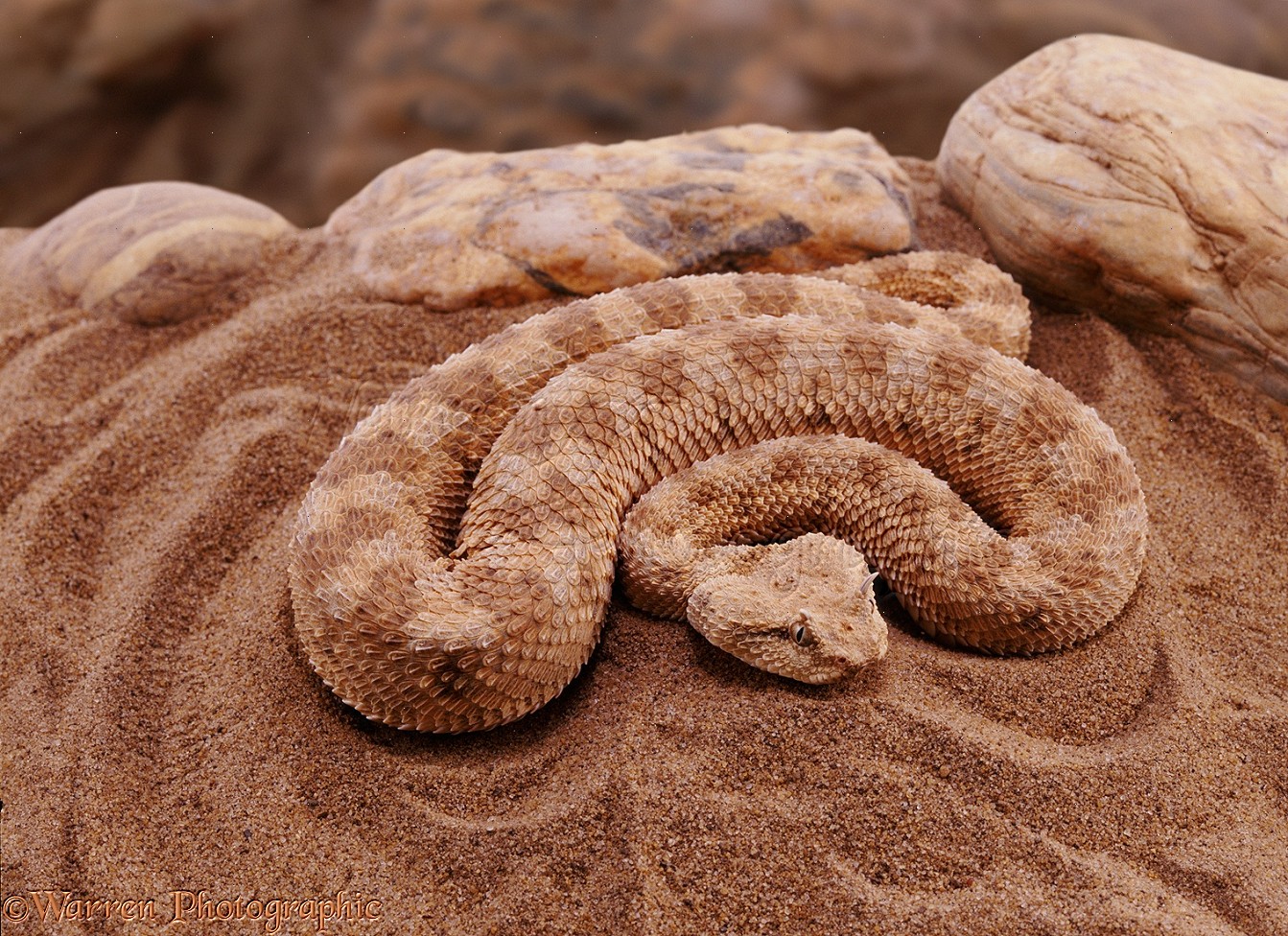
Horned Viper coiled photo WP08633
Cerastes, genus of venomous, desert-dwelling snakes of the viper family, Viperidae. There are two species, the horned viper ( C. cerastes ), which usually has a spinelike scale above each eye, and the common, or Sahara, sand viper ( C. vipera ), which lacks these scales. Both species are small (seldom more than 60 cm [about 2 feet] long.

Horned Viper a photo on Flickriver
Horned Viper Horned vipers sidewind across the desert sands of their home. Continue Reading after the facts. Advertisement Horned Viper Scientific Classification Kingdom Animalia Phylum Chordata Class Reptilia Order Squamata Family Viperidae Genus Vipera Scientific Name Cerastes cerastes Read our Complete Guide to Classification of Animals.

Desert Horned Viper Observed In Turkey’s Küre Mountains National Park Reptiles Magazine
The snake that hears sound through its jaw By Zeeya Merali 14 March 2007 THE horned desert viper's ability to hunt at night has always puzzled biologists. Though it lies with its head buried in.

ENCYCLOPEDIA OF ANIMAL FACTS AND PICTURES HORNED DESERT VIPER
The horned viper can live up to 14 years in captivity, and its lifespan in the wild is unknown. Predators. The predators of horned vipers are Nile monitors, honey badgers, and various feral wild cats. If threatened, they form a C-shaped posture and rapidly rub their coils together, producing a rasping sound as they cannot hiss.
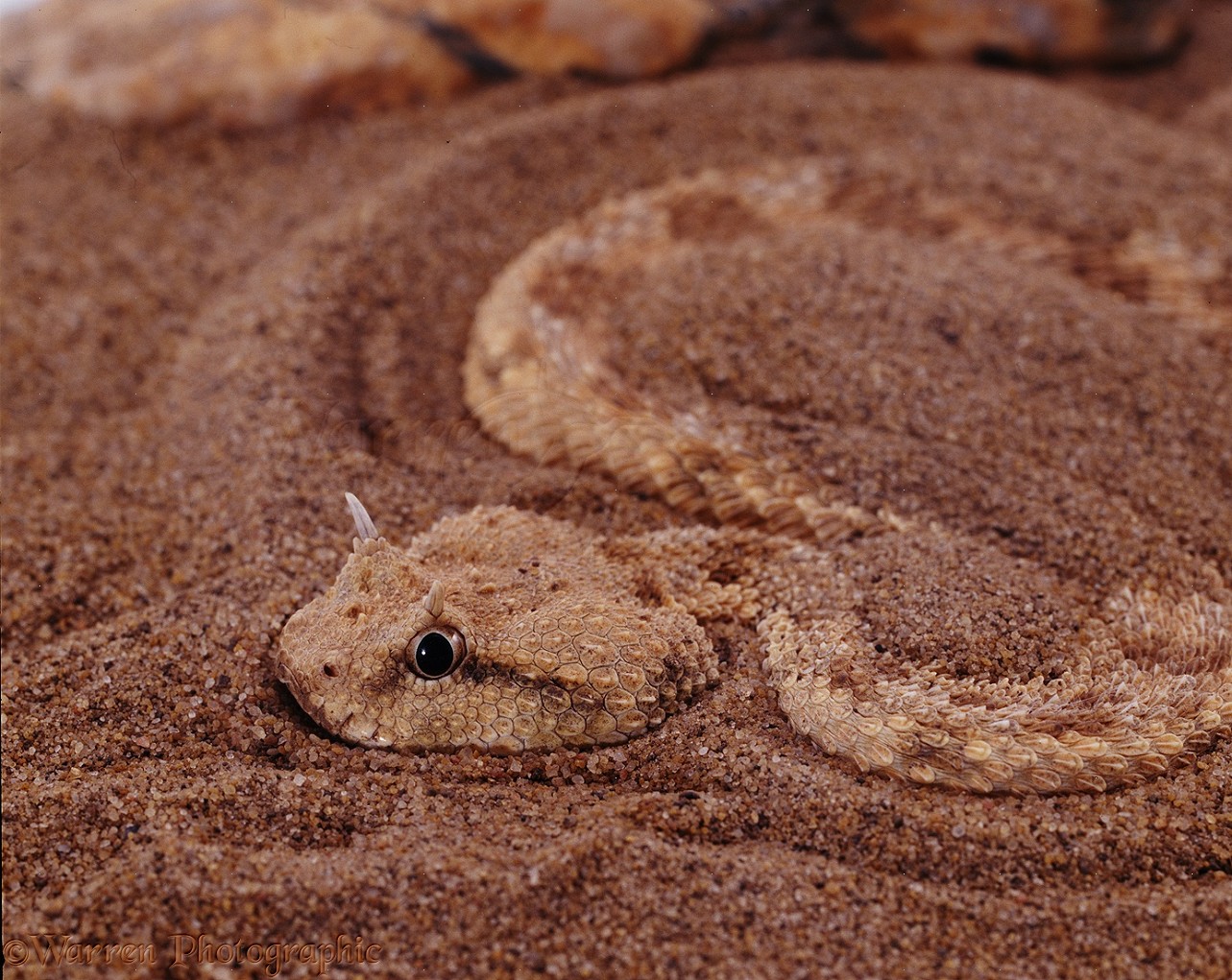
Horned Viper eye night adapted photo WP08634
Desert horned vipers have unique heads which are flat and angular compared to other snakes, including cobras, mambas, and pythons, which have bulbous heads more suited for digging into burrows or gravel-like material to search for prey items such as rodents or lizards. 7. Desert horned vipers are also known for their amazing ability to blend.

Snake! 15 deadliest serpents Viper snake, Snake, Snake picture
The desert horned viper, also known as the horned sand viper, is a snake with horns! It is a species of sidewinder snake, though it's not related the the sid.
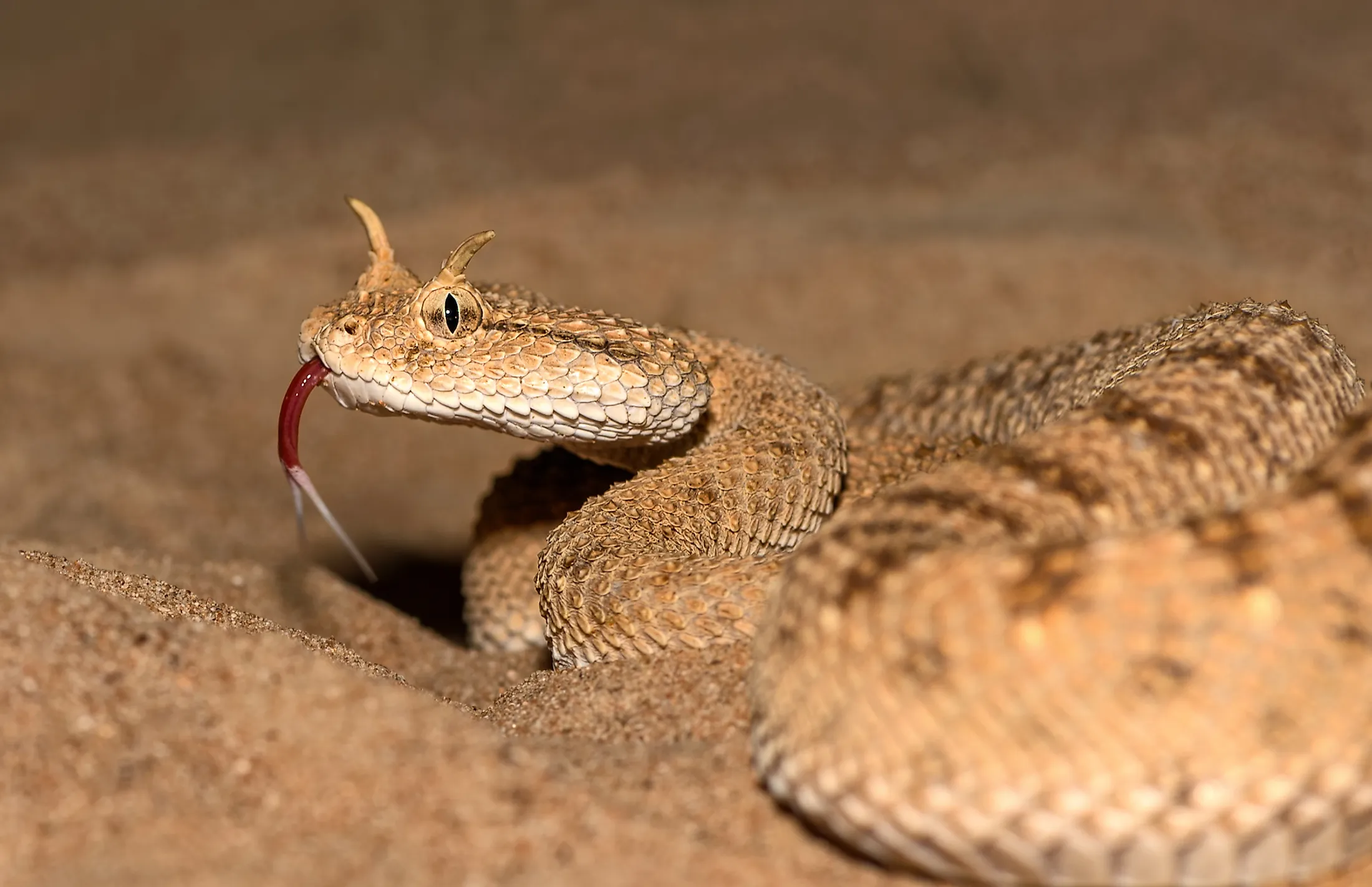
What Animals Live In The Arabian Desert? WorldAtlas
Desert Horned Viper Cerastes cerastes. 1. Summary 2. Cerastes cerastes (common names: Saharan horned viper, horned desert viper, more) is a venomous viper species native to the deserts of Northern Africa and parts of the Middle East. It often is easily recognised by the presence of a pair of supraocular "horns", although hornless individuals do.

Desert horned viper (Cerastes cerastes) in the Negev desert, Israel Cute animals, Snake, Ocean
The Horned Desert Viper, also known as the Cerastes cerastes, is a fascinating creature that inhabits the arid regions of North Africa and the Middle East. As one of the most unique and elusive species of snake, this venomous reptile has captured the curiosity and imagination of both scientists and nature enthusiasts alike.

Hornviper Cerastes cerastes Horned Desert Viper Flickr
Although Cerastes are often referred to as horned vipers, only the two larger species, C. cerastes and C. gasperettii, are known to have horns, and even these do not always have them. Individuals with and without horns occur within the same population and even within the same litter. [5]
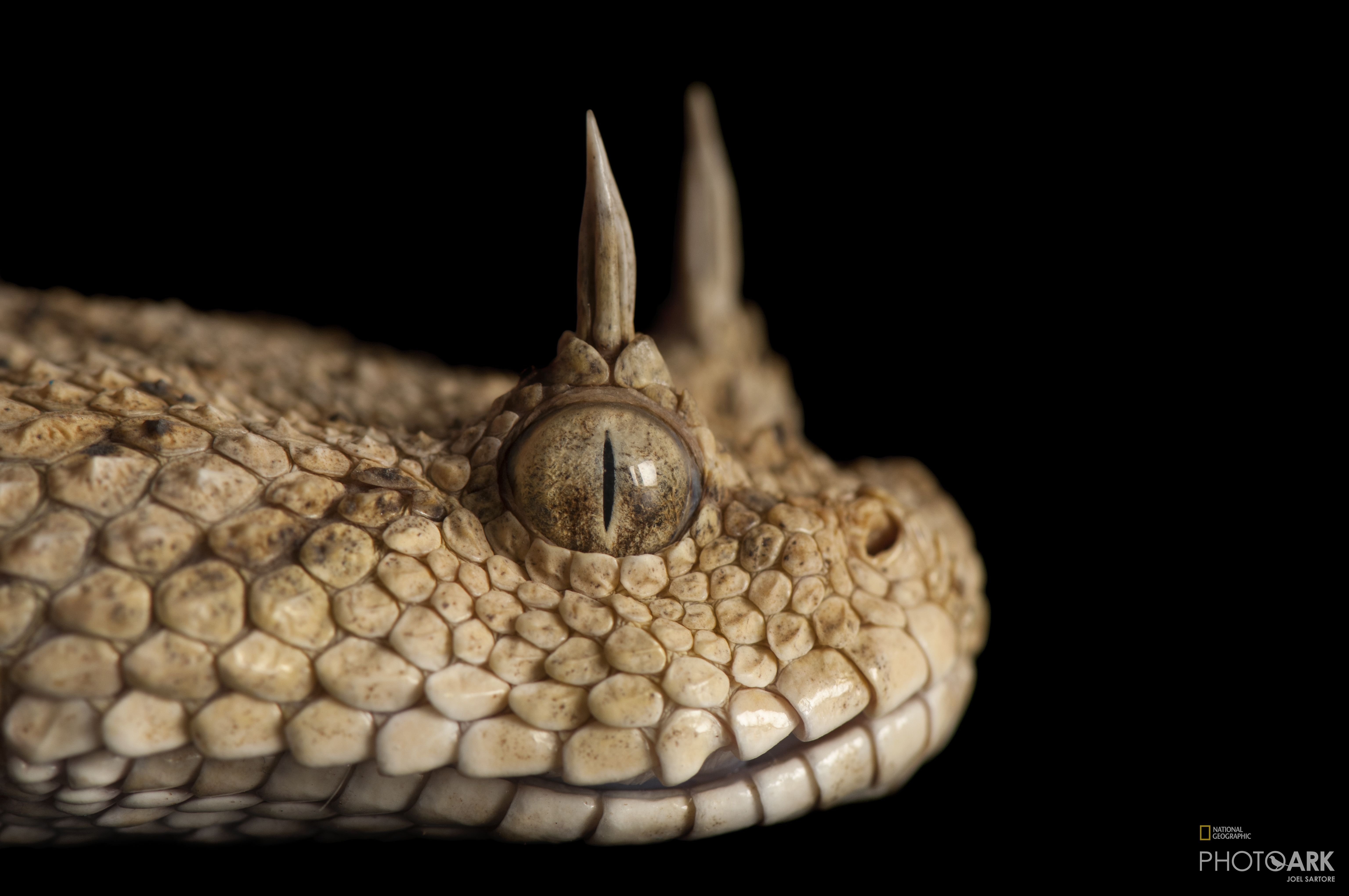
Photo Ark Home Desert Horned Viper National Geographic Society
There are two species, the horned viper ( C. cerastes ), which usually has a spinelike scale above each eye, and the common, or Sahara, sand viper ( C. vipera ), which lacks these scales. Both species are small (seldom more than 60 cm [about 2 feet] long), stocky, and broad-headed and are found… sidewinder classification In sidewinder

Horned Desert Viper (cerastes Cerastes) Photograph by Photostockisrael
The desert horned viper moves swiftly across the loose sand by sidewinding, throwing oblique loops first with its top half and then with its lower half. With its sharp-edged scales it can shuffle into the sand with amazing speed, burying itself up to the eyes.
Here is a Cerastes cerastes (Horned Viper) found in Southern Morroco in Sept 2017. I was
Cerastes cerastes, commonly known as the Saharan horned viper [3] or the desert horned viper, [4] is a venomous species of viper native to the deserts of Northern Africa and parts of the Arabian Peninsula and Levant. It is often easily recognized by the presence of a pair of supraocular "horns", although hornless individuals do occur. [3]

Horned Desert Viper (Cerastes cerastes) עכן חרטומים Viper snake, Like animals, Snake
The Horned Viper in Culture and Mythology Conclusion The Horned Viper, also known as Cerastes cerastes, is a venomous reptile belonging to the Viperidae family. This snake is highly unique in both its appearance and behavior, making it a fascinating subject for study.